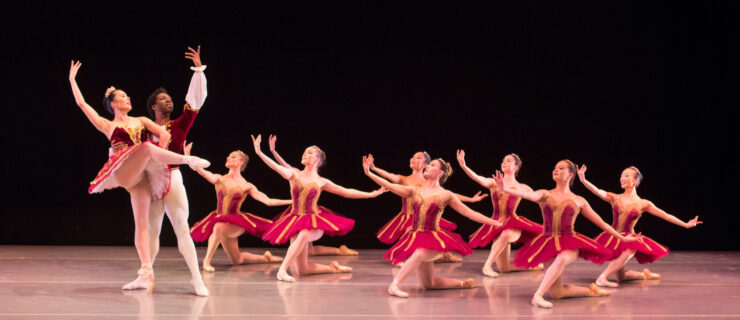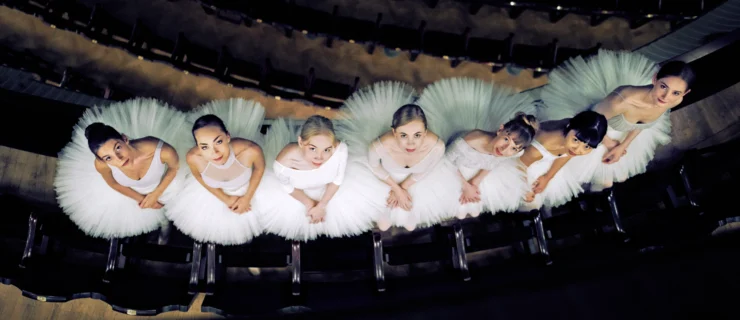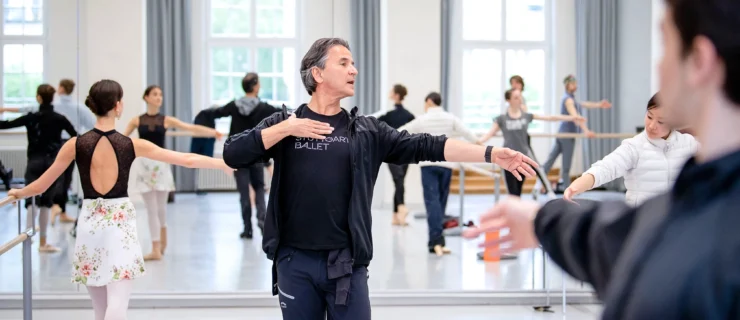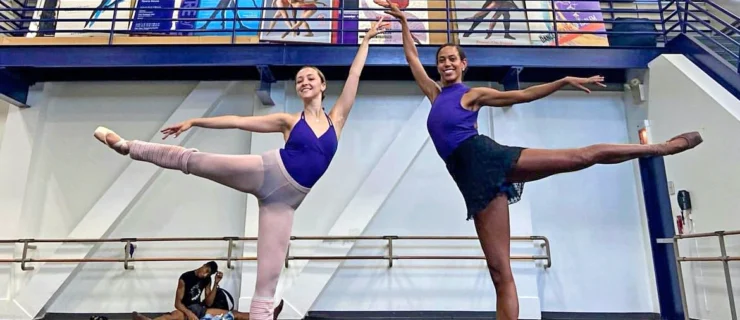Silent Partners
Long established in Europe, choreography competitions are gaining increasing popularity on this side of the ocean. Here, companies such as Milwaukee Ballet, Ballet Austin, Ballet Nouveau Colorado and Les Grands Ballets Canadiens de Montréal, to name a few, are scheduling these contests as part of their season lineups in the hope of finding ballet’s next choreographic triumph.
“In dance,” says BA Artistic Director Stephen Mills, “there is so much choreographers need that they can’t just readily go out and get themselves. They need a venue, dancers—and an audience.” To fulfill those needs, Mills created BA’s choreography competition, New American Talent/Dance, which debuted in 2006 and took the stage again last February.
BNC launched its new 21st Century Choreography Competition (now called “dancemakers 2.0”) last April, with the similar goal of giving young choreographers a break by providing them with studio time, administrative support and the altogether key ingredient: dancers to create on.
While great choreography is the goal, for the dancers who must flesh out the choreographers’ ideas, a choreography competition is a chance to sharpen their craft mentally and physically—and to experience the ultimate perk: being part of the creation of a new work. It can be rewarding to be the first to perform, and in a sense, define a role, yet a competition puts the emphasis on the choreographers.
“It is always inspiring to know that you are so integral to the final product,” says BA dancer Allisyn Paino, “but it definitely challenges a dancer to be able to acclimate to each choreographer as quickly as possible.”
Unlike composers or painters, who get to work out their ideas in solitude, choreographers must wait until they can work with their dancers. Face to face in a dance studio, choreographers and dancers know that each relies on the other to turn an idea into a dance. To accomplish this, however, no two choreographers approach the task in the same way.
“There’s a major learning curve for dancers to get to know a new choreographer,” says BNC Artistic Director Garrett Ammon. For any new work that is created, the dancers must adapt quickly to each choreographer’s movement quality and vocabulary, not to mention personality quirks and rehearsal style. “It can make them a little insecure,” says Ammon.
Ammon and Mills relied on their dancers’ professionalism to smooth the adjustment to a new choreographer. Both also knew that despite the contemporary works in their respective repertoires, it can be hard for ballet dancers to feel comfortable with unfamiliar approaches to movement.
“I had to open my mind to more creativity in terms of the initial choreography,” says Paino. “One choreographer may be very specific, coming in and saying, ‘I want you to be here and do this.’ Then he or she looks at the movement on your body and adjusts it. Another choreographer comes in and says, ‘Here’s an idea that I am going for; now I want you to take these steps and make them look like this idea.’”
All told, a competition can throw these aspects of making work into uncomfortably high contrast. “The dancers didn’t love all the residencies,” says Mills, “but it was good for them to have to negotiate everything that goes on in the room. It makes them stronger, better artists and communicators. That’s a positive aspect.”
As if it’s not enough to have to absorb a different way of working along with the steps and musicality of a new work, for both of these competitions, time—or the lack of it—was another factor. BA allotted 40 hours to create a new, less than 20-minute work. BNC’s time frame was even shorter: 25 hours to create a ballet of at least 15 to 20 minutes.
“It was definitely short,” says Ammon. “The choreographers came in knowing that it was short. But it also created that extra little bit of pressure that I think pushed them out of their comfort zone.”
The choreographers were under the gun to be creative, and the dancers even more so. They knew that, competition or not, their job was to produce a compelling performance of whatever material they were given.
“At first I thought, This is a lot for the choreographers: They only have 25 hours,” says BNC dancer Sarah Tallman. “Then, half an hour into the rehearsal I thought, This is a lot for the dancers: We also have 25 hours to convey exactly what they want.”
Both Mills and Ammon were sensitive to the demands they were putting on their companies. “The rule was that no dancer could be in more than two ballets,” says Mills. It was a practical consideration, one that acknowledges the fact that concentration and endurance are both factors in sustaining good work—and avoiding injury.
At BA, for the creation period (the residencies were in sequence and did not overlap), choreographers had roughly four hours of rehearsal a day for two weeks in addition to the dancers’ daily class and other rehearsals. Even for workers used to that kind of concentrated physical effort, the scenario was pretty grueling.
Tallman’s survival tactic during BNC’s creation period was “lots of water, and lots of rest when we got it,” she says. “Usually on a five-minute break, the dancers will hang in the studio and work on some extra things. But by the end of the first week, I just needed to sit and let all of it saturate.”
Surprisingly, even though competitions are about winning, Paino, who has participated in both of BA’s competitions, doesn’t recall that being part of the focus in the studio. “I felt that we were just working,” she says.
“I never got the feeling that any of the choreographers were thinking ‘I want this to look like this because I want to win.’ This is their art. That’s what was important to them.”
And for the dancers, too, this is their art. Translating ideas into coherent movement is what dancers do every day, as is pushing themselves to be better.
“It’s so important for dancers to be chameleons, especially nowadays,” says Paino. “It was very different when ballet companies just did classical ballets, now it seems that every classical ballet company wants to do some contemporary work. It means the dancers have to be more malleable—or, at least, differently malleable.”
Choreography competitions may or may not yield the yearned-for triumph, yet regardless of the outcome, they have a lasting impact on a company’s dancers. The chance to be in on the creative process is something dancers often dream about. Surviving—and thriving—in the midst of the experience can yield a unique satisfaction and mark a step along the way toward artistic maturity.





